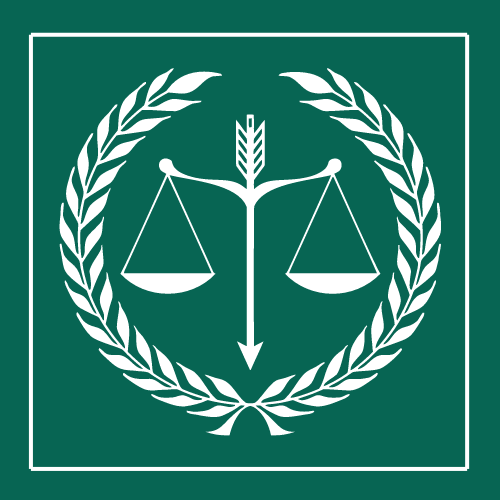Going through a divorce can be challenging, especially when you’re concerned about costs. As experienced divorce lawyers at BruegelPC, we understand the financial strain and emotional stress that come with it. That’s why we’re here to guide you on how to file for divorce in Colorado for free. In this article, we’ll provide straightforward tips to help you through the process without breaking the bank.
As stated by the Colorado Judicial Branch, you can file for divorce for free by filling out the “Motion to File Without Payment” form and submitting it with your divorce paperwork. If the court approves your request, you won’t have to pay filing fees. Visit the Colorado Judicial Branch website for more details.
Understanding Divorce Laws in Colorado
Navigating Divorce Laws in Colorado involves understanding that the state upholds a no-fault divorce system.
In concise terms, in Colorado, there are two types of divorce: contested and uncontested. A contested divorce happens when the couple can’t agree on things like splitting their property or child custody. An uncontested divorce is when they can agree on these issues. Colorado is a no-fault divorce state, which means you don’t have to show that your spouse did anything wrong to get a divorce. The most common reason people give is irreconcilable differences.
To start a divorce in Colorado, one of the partners must have lived in the state for at least 91 days before filing. The process begins by submitting a Petition for Dissolution of Marriage to the court. Both partners will need to share their financial details, including their assets, debts, income, and expenses. Essentially, Colorado uses an equitable distribution system to divide marital property, which means the property is divided fairly but not always equally. This includes things like real estate, retirement accounts, and investments acquired during the marriage.
If the couple has children, they need to create a parenting plan that covers custody, support, and visitation. If they can’t agree, the court will decide based on what is best for the child. Colorado also requires parents going through divorce to attend a parenting class.
Understanding divorce in Colorado means keeping track of legal rules, finances, child custody, and property division. It’s important to get legal advice to help you through the process and protect your rights.
Steps to File for Divorce in Colorado
You need to reside in Colorado for at least 91 days before you can file for divorce.
Basically, first, fill out the divorce forms and submit them to the court. Then, you need to give the paperwork to your spouse and wait for their reply.
Simply put, go to any court hearings that are needed and do what the court says about dividing property, child custody, and support. Finally, get the final divorce decree from the court to end the marriage officially.
Qualifying for a Free Divorce
Building on an earlier idea, to qualify for a free divorce, you generally must prove financial hardship due to low income.
To break it down to get a free divorce, you might need to show proof of your financial situation, like pay stubs or tax returns.
Some states also require you to live there for a certain amount of time before you can file for a free divorce.
You may need to show that you and your spouse agree on the divorce and issues like child custody or property division.
Broadly speaking, if you don’t agree, you might not qualify for a free divorce and could need a lawyer’s help.
Check the specific rules in your state and gather all the paperwork you need. Getting help from a legal aid group or a free lawyer can make sure you meet the requirements for a free divorce.
Filing Paperwork and Legal Forms
Reviewing earlier themes, filing paperwork and legal forms ensures compliance with regulations and laws by meticulously organizing and submitting essential documents like contracts, agreements, and court filings.
Fundamentally, you can do this online or on paper. Make sure everything is accurate and complete to avoid delays or legal issues. Keep proper records in case you need them for legal reasons. Follow any instructions or rules from the relevant authority. It might be helpful to get professional advice if the process is complicated. Keep copies of all paperwork to track progress and resolutions.
At its heart, regularly update and review documents to reflect any changes. Submit paperwork on time to avoid penalties. Not submitting required forms can result in legal trouble or loss of rights. Keeping organized records can make future tasks easier and protect against disputes. Regularly check and manage paperwork to prevent mistakes. Following filing rules is essential for legal protection and smooth business operations.
Free Legal Resources and Aid in Colorado

Emphasizing our past talks, Colorado offers a wealth of free legal resources and aid to support those who can’t afford private legal services.
At its simplest, various resources can help with legal issues, such as legal aid organizations, free legal clinics, and self-help centers. The Colorado Legal Services website also offers valuable information on legal topics and provides online forms and resources. Some groups even run free clinics where volunteer lawyers give advice on specific legal problems.
In basic terms, keep in mind that the availability of these resources can depend on the type of legal issue and where you are in Colorado. It’s a good idea to contact the organization directly or check their website to find out more about what services they offer and how to get them. These free legal resources can assist people in understanding the legal system and finding the help they need with their legal issues.
The Final Thoughts
As I mentioned previously in conclusion, filing for divorce in Colorado for free is possible by utilizing the resources available online and through the state court system.
What BruegelPC is advising against is, by following the necessary steps, including completing the required forms, attending mediation, and submitting the paperwork to the court, individuals can effectively work through the process without incurring unnecessary costs. Ultimately, with careful planning and adherence to the guidelines, divorce can be achieved without breaking the bank.
References
Here is the literature that I was using for drafting this article:
- “The Colorado Divorce Handbook: A Comprehensive Guide to Dissolution of Marriage and Legal Separation in Colorado” by Carl O. Graham, Bradford Publishing Co., Carl O. Graham
- “How to File for Divorce in Colorado” by Emily Doskow, Nolo Press, Emily Doskow
- “The Colorado Divorce Survival Guide: How to Navigate the Rapids of Divorce in Colorado” by Lorinda Gonzalez, iUniverse, Lorinda Gonzalez

